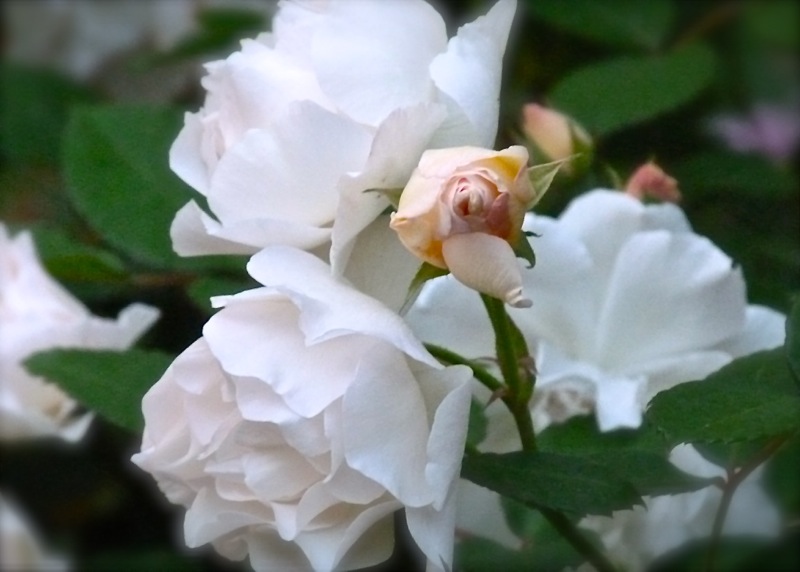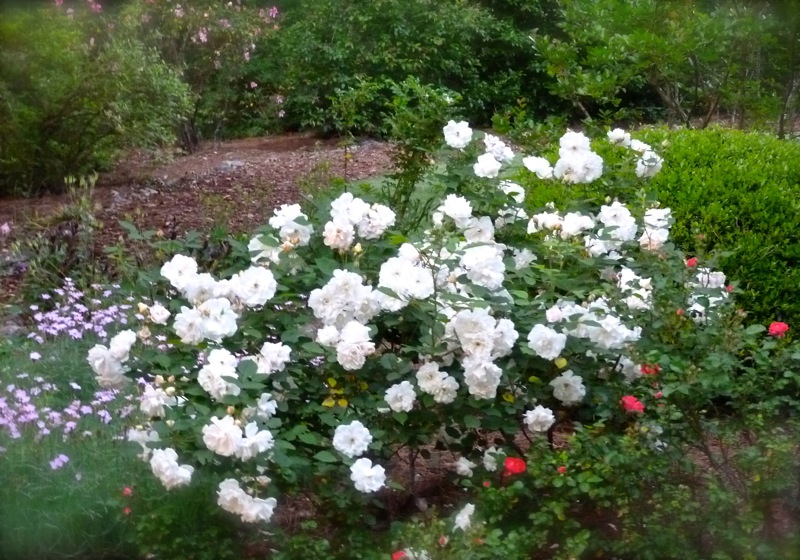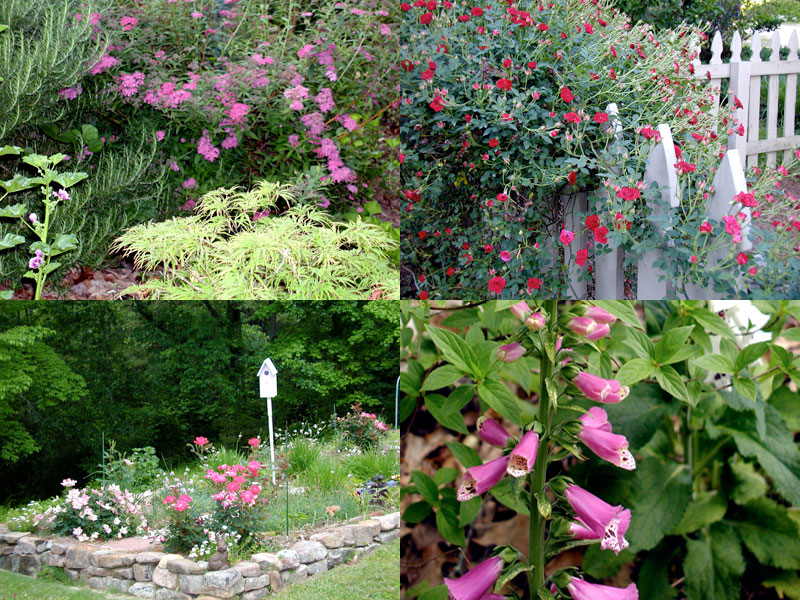Penelope Rose, an Antique Rose for the Organic Garden
 Sunday, May 4, 2014 at 7:00PM
Sunday, May 4, 2014 at 7:00PM English clergyman Joseph Pemberton introduced the Penelope rose to the world in 1924.  Pemberton's roses are also called hybrid musk roses, and Penelope has a delicious fragrance that is a blend of musk and fruit. With large clusters of medium to large, semi-double blooms on a sprawling frame, this antique rose has a unrestrained, romantic appearance.
Pemberton's roses are also called hybrid musk roses, and Penelope has a delicious fragrance that is a blend of musk and fruit. With large clusters of medium to large, semi-double blooms on a sprawling frame, this antique rose has a unrestrained, romantic appearance.
The flowers are a pale peachy-pink, fading to creamy white. 
 The hotter the weather, the paler the blooms. Penelope is a rebloomer with a large flush of blooms in late spring and then another flush in early autumn as the weather cools, with sporadic flowering in-between. One can encourage repeat blooms by deadheading the earlier blooms. Later blooms should be allowed to mature on the shrub, as lovely coral pink hips follow the flowers.
The hotter the weather, the paler the blooms. Penelope is a rebloomer with a large flush of blooms in late spring and then another flush in early autumn as the weather cools, with sporadic flowering in-between. One can encourage repeat blooms by deadheading the earlier blooms. Later blooms should be allowed to mature on the shrub, as lovely coral pink hips follow the flowers.
Like all roses, Penelope likes loamy soil. Clay is fine as long as generous amounts of organic amendments are added. Penelope has lustrous, healthy foliage with little need for spraying or fertilizing. I feed mine in spring with fish emulsion, and I usually treat it, along with almost everything else in my garden, with a summer tonic of 2Tbs epsom salts and 2Tbs fish emulsion per gallon of water. In late winter I spray it with a dormant oil. That's it, and Penelope probably would carry on just fine if I did nothing at all.
Growing in hardiness zones 6-9, It will reach 5 feet by 5 feet or larger but can be pruned to maintain a more moderate size. It could be considered a semi-climber. My own Penelope grows amidst perennials and other carefree roses, but I think it also would look wonderful growing along a wall or fence. Penelope is one of the few roses that will bloom in semi-shade and will do well along woodland edges.

My humid, hot climate is not kind to most roses, and I use a low maintenance, organic approach to everything I grow. I am happy that Penelope has done so well for me. The American Rose Society rates Penelope 8.7 on a scale of 10. That means it is an excellent rose that is recommended without hesitation. I heartily agree.
You may also enjoy Red Cascade: A Favorite Low-maintenance Rose and Summer-Proof the Garden.
 Permalink
Permalink 